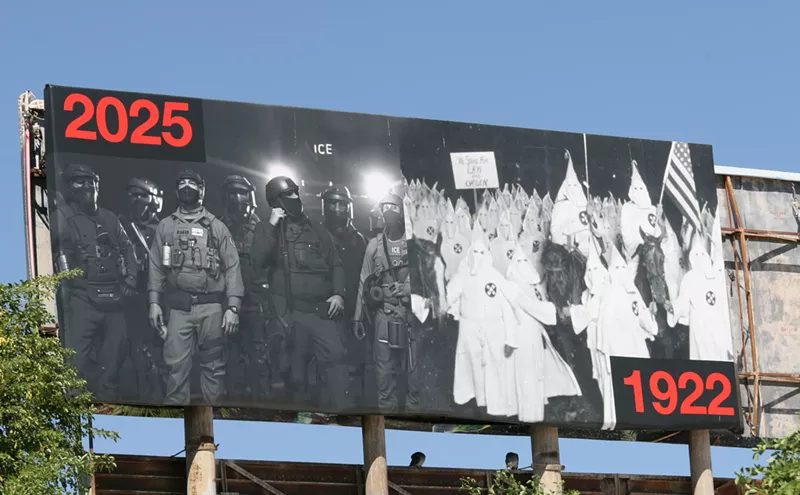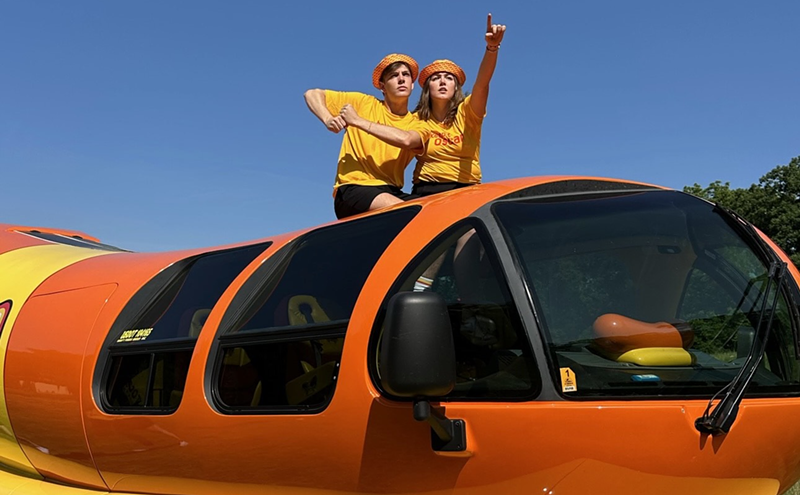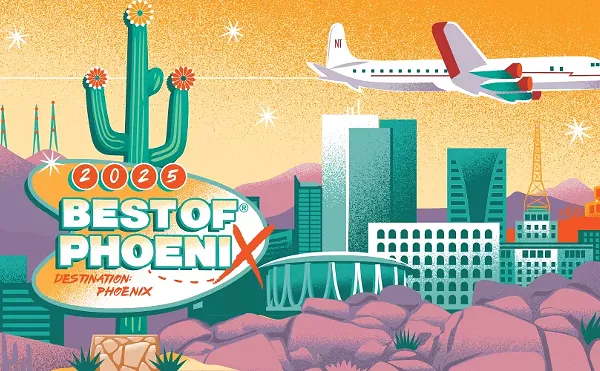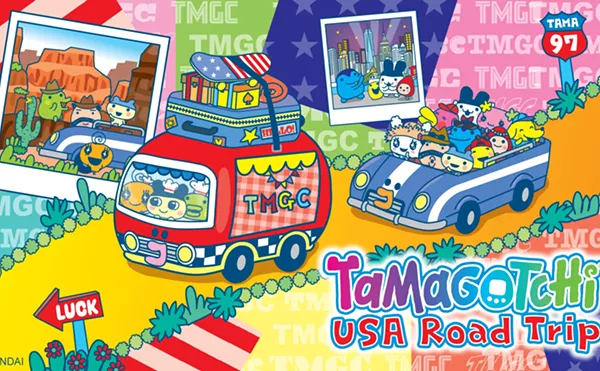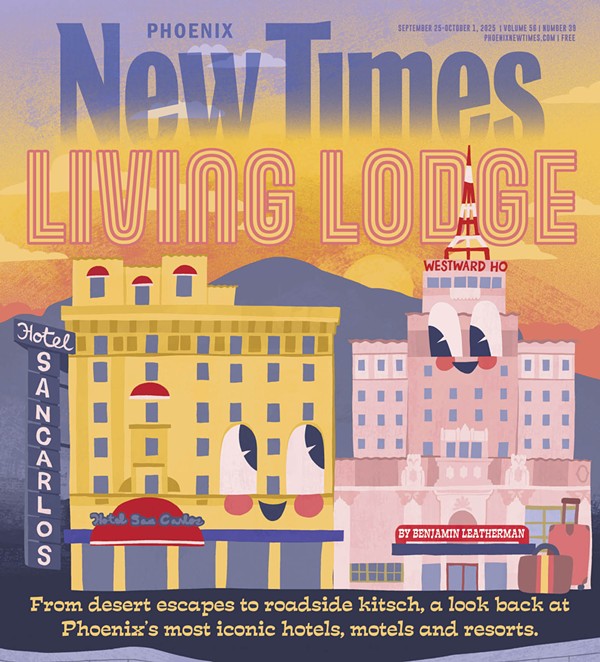For more of the best people, places and things to do in Phoenix, check out our 2015 Best of Phoenix awards.
The wood in the small shack felt like ice as he held his brother close to stay warm. William Hernández's hands were numb, his fingers stiff, his bones trembling underneath his brown T-shirt. He had never imagined the desert could be this cold.
The smugglers wouldn't let them light a fire. They feared getting caught by Border Patrol.
They were blanketed by night in the middle of the Sonoran Desert, hundreds of miles from his grandmother's house in Villa Azueta, Veracruz. Hernández was freezing to death and he hadn't told her goodbye.
Few migrants like Hernández come prepared to face the Sonoran Desert, but those who make it to the United States know the desert and the stories it hides. And that's the desert most want to forget.
It was late March 2002. He was a skinny 18-year-old with dark eyebrows and short, thick black hair.
Inside the shack, he prayed for sunrise. He prayed even more for Raymundo, his 15-year-old brother.
Hernández kept putting his hand over his brother's heart to make sure it was still beating. "Tengo frio, tengo frio," he would say. "I'm cold, I'm cold."
Then he'd go silent.
Their smugglers vanished with the sun. Hernández and his family survived. They wandered to a road, then walked until the Border Patrol found them and deported them.
Hernández grew up with his grandmother in a small town. His mother, Olivia, worked in the fields, and he barely got to see her. So when she offered to come along with him and his brother, he thought she was trying to make up for lost time.
He dreamed of a job in the U.S. so he could go back to Mexico to study mechanical engineering. But the real reason he came was to keep a close eye on his adventurous younger brother.
After being deported, they returned to where the journey started: Altar.
The small town, 60 miles from the border, is a hub to connect with smugglers or coyotes to cross to the other side.
"Era como un tianguis," he says. "It was like being in a huge market."
Strangers approached them: "Who are you looking for? We can offer you different prices. We give you a warranty."
More than a decade later, Altar is not much different from how Hernández remembers it. There are fewer people on the streets. Most migrants stay in one of the 35 guest houses in small dark rooms with bunk beds that look like storage shelves for exhausted people. They lie on mattresses made out of carpet.
The brownish yellow church sits in the middle of the plaza, where out-of-state buses drop people from other parts of Mexico. Hernández came in one of those buses on a three-day bus ride from Mexico City.
Wrapped around the square is a permanent market of shops that sell camouflage hats, T-shirts, and backpacks. Techniques have changed over the years. The new trend is to use carpet pads that can be tied around sneakers, making it more difficult to leave footprints that can be tracked by Border Patrol agents.
A block away from the square, the pharmacy sells electrolyte drinks and water by the gallon in black containers impervious to the sun. Women buy birth control pills because they know they can be raped during the journey. They face equal danger from desert bandits and their own guides.
"Migrants are vulnerable, but women are the most vulnerable," says Father Prisciliano Peraza, who has been at the helm of Our Lady of Guadalupe parish in Altar for the past 12 years. He's seen the migrant journey turn more violent.
"We try to prepare them for the dangers that they would be exposed to. By the time they arrive here, they've already been in this route of violence, death, and massacre."
Peraza knows most migrants, especially Central Americans, are exposed to extortion by Mexican authorities and criminal gangs even before they reach his town.
"They may not carry anything with themselves, but their wealth is their faith," he said.
In a small room inside the parish, Peraza has seen migrants follow the same ritual year after year. They light candles in front of a framed picture of the Virgin of Guadalupe. They believe that the candles go out for those who don't make it through.
"The desert is a huge filter. Sadly, the weaker people are left behind," Peraza says.
These days, smugglers in Altar charge up to $4,500 per person to reach Phoenix — plus a $100 fee that goes to a drug cartel for the right to use the plaza.
Hernández's family had a connection with the owner of a chicken rotisserie. He was an overweight man with a lazy eye.
“The Desert is a huge filter. Sadly, the weaker people are left behind.”— Father Prisciliano Peraza
tweet this
He would charge them $1,000 each. They paid him half of that and promised to settle the rest of the debt upon reaching Chandler. He offered them a warranty if they didn't make it on the first attempt.
No one told them what to bring or how to prepare.
They bought 10 gallons of water for the three of them, canned chicken, a few apples, and some electrolyte bottles. Hernández put them in his black and red backpack. He carried four gallons. A Salvadoran friend and his brother carried the rest.
Before they left, Hernández called his grandmother to ask her to pray because they were going to try one more time.
They were ushered to a white van that made its way around town till it reached a dirt road with a toll. The road leads to Sasabe, a border town that is the last stop before the crossing.
They were in a group of 45 in two vans. Across from him sat parents in their mid-30s from the southern states of Guerrero and Oaxaca. Their hands were worn from working in fields.
They wore winter dress pants, dress shoes, and button-down shirts — the clothes one wears for a formal occasion.
Two infants were wrapped in blankets in the arms of their aunts.
Hernández wondered: "What are we going to do if we have to face another cold night?" They didn't have warm clothes.
Before reaching Sasabe, someone stopped them to ask for the cuota (fee) for the drug cartel.
Hernández had hid his money well. He'd wrapped it in plastic and made a small roll the size of a cigarette that could fit in his toothpaste. He put the rest of the 1,500 pesos (about $100 dollars) inside his deodorant. He removed the applicator stick and fit the bills in the applicator's chamber.
In his wallet he'd placed a stamp from San Martin de Porres, a black saint whom his grandmother worshiped.
When they reached Sasabe, they didn't walk far from the van. The sun was setting as they crossed the border. It was a barbed wired fence. The smugglers lifted a wire, and Hernández put one leg through. His foot landed on American soil and the rest of his body followed.
The Sonoran Desert doesn't move. It speaks quietly in a high-pitched hum. Hot breezes blow through the spines of saguaros. Dust devils lift clouds of reddish dirt. It's 100,000 square miles extending into Southern California, southwest Arizona, and into the Mexican states of Baja California and Sonora.
There are places where the border fence makes the hills look like a porcupine, and other places where the slopes seem to swallow the bars of the border fence. And others where it is easy to forget there's an international boundary running across a naked hillside of rock and barbed wire.
When they pass through the fence, migrants leave behind the same desert that they face moving forward. But the one ahead hides more than rattlesnakes, thorns, and scorpions.
"This isn't a straight path to the U.S. This is difficult terrain," says George Treviño, a spokesman for the Border Patrol's Tucson sector.
Toward the northeast, migrants traverse the Buenos Aires National Refuge, dotted with mesquite trees and dirty blond grasslands. If they go west, they find the Tohono O'odham Nation. The land is the size of the state of Connecticut and towns are few and far between.
In these remote areas beyond the gaze of the Border Patrol, the sacred Baboquivari mountains rise up about 8,000 feet, keeping watch of the migrant's trails. I'itoi the creator lives in the highest peak. He was there before Mexico and the U.S. became separate nations.
Hernández doesn't know which way they walked. East or west.
He kept an eye out for rattlesnakes. They walked fast over gravel and rocks on the side of a hill following their guías, Rosendo and Don Pascual.
Hernández hadn't gone far when he felt a sharp pain in his foot, a dead cholla cactus on the ground. The thorn went through his Pirma white, black, and yellow sneaker. He stopped to take it out.
"If something happens to you, let us know. Don't stay behind," one of his guides shouted.
A few minutes later, two balls of needles fell on the top part of his right thigh. It felt like a bee sting, but it was from a jumping cactus. Rosendo took them out with a hairbrush. But the pain wouldn't go away.
Rosendo was maybe a year older than Hernández. He had a cellphone the size of a brick. He wore a red shirt, khaki pants, and hiking boots. He was blond, and it seemed as if he had lived in the U.S. His backpack was heavy, "like a thousand devils," Hernández thought. It was stuffed with canned food.
Hernández imagined that Rosendo had served in the military. The guide knew the terrain up and down. He could anticipate when they were approaching a dip or a dry stream.
Rosendo kept track of the Border Patrol's times on a round black watch with chrome needles.
"Do you see that red light? That's where we are going," said Don Pascual. He was much older and wore cowboy boots and a white goatee.
The red light appeared close, but the more they walked, the farther away it got.
The moonlight helped Hernández sense the shapes of trees and saguaros twice his height, raising their arms like a silent army in surrender or at the brink of war. Sometimes the path would increase in elevation and he could see those walking in front of him. He kept a close eye on his brother.
The moonlight helped Hernández sense the shapes of trees and saguaros twice his height, raising their arms like a silent army.
tweet this
"They told us we would walk four hours," he recalls, "but the hours turned into four days and three nights."
Temperatures in the desert typically are moderate in April, the month Hernández crossed. But at night during winter, they can drop dramatically — even below 32 degrees — putting people at risk of hypothermia, says the Border Patrol's Treviño.
In the summer, temperatures can reach 120 degrees.
"Whether it is winter or summer, you cannot carry enough water to walk from eight to 10 days, which is how long you have to walk to make it across," says Sarah Roberts, a registered nurse who does humanitarian work on the border.
To survive, people need at least to drink two gallons of water every eight hours in those temperatures, she says.
Roberts is a co-founder of No More Deaths, a group of volunteers that banded together in 2004 to provide medical attention to migrants in distress in southern Arizona.
Dehydration and heat illness can creep up on unsuspecting migrants. The body temperature rises and causes further dehydration. Muscles start to cramp due to loss of electrolytes and potassium. There is nausea, vomiting, and disorientation.
And then, Roberts says, it gets worse. Skeletal muscle tissue can break down in a condition known as rhabdomyolysis, leading to the release of damaged muscle cells in the blood that can lead to kidney failure.
Heatstroke can be lethal. People start to hallucinate. They take their clothes off because they think they are in water or they might even put sand in their mouths, she says. They try to drink liquid from barrel cactus. They get spines on their lips and tongue. In despair, migrants even drink water from cows' water tanks or they drink their own urine.
Inevitably, they lose their way.
"They are usually disoriented to the point that they move off their trail," she says.
Blisters on feet can be lethal under those temperatures, too. People in pain get left behind because they can't keep up. It's like they have raw open skin on their feet that should be treated as a burn, Roberts says.
By the time migrants come in contact with her, Roberts says, they are dehydrated. They often have sprained ankles or broken bones.
There's a sense of caution and pain that they carry. There is hidden trauma that they don't want to talk about, she says.
"It's like if they've been going through a low-intensity war zone. It's not just that they've been struggling with the physical, but also the fear," she says.
"They're being hunted. The Border Patrol is out there looking for them."
The second day was the hardest. Rosendo's military pace was hard to maintain. The red light kept getting farther away until it disappeared. At night, Don Pascual called together the group and offered them a white powder that would help them to walk faster. He put some of it on the top part of their hands and many — from teenagers to middle-aged women — inhaled it.
Hernández didn't dare.
"People were changed and full of energy," he remembers.
The following day, the same people became more exhausted than normal, experiencing cramps in their legs. A heavyset man in his 40s couldn't walk anymore. Hernández held him on one side and his Salvadoran friend on the other. They dragged him for a while until he could walk again.
"He would cry and beg to be left behind," he says.
Hernández imagined just how many others went through the same and were abandoned.
Later, Hernández carried a 4-year-old girl on his back.
He was tired. He had only a little bit of water left and nothing else to eat. The sun didn't matter. He had only one idea on his mind: to make it through.
The group begged Rosendo to let them rest under some bushes as night fell.
Hernández used his backpack as a pillow.
"What the heck am I doing here? I was poor, but I had what I needed in Veracruz," he recalls thinking.
He heard coyotes howling in the distance and the whispers of his travel companions. A woman told a story of how she cheated on her husband with a best friend.
He laughed to himself. But it turned serious when he heard Border Patrol helicopters. Rosendo gave the order to stay quiet.
Almost 3,000 people died in the Arizona desert between 2000 and 2014, according to U.S. Customs and Border Protection.
"We'll never know how many died here and were not found," says David Garcia, a member of the Tohono O'odham Nation, looking out the window on a recent drive along State Route 86.
Garcia knows his way around the mountains. They are sacred to him.
Since 2003, he has led search efforts with families to find the remains of missing migrants.
There's one he can't forget. He could tell there were remains on a hill because of the vultures flying overhead. He found the remains not far from a clearly marked migrant path.
He heard coyotes howling in the distance and the whispers of his travel companions. A woman told a story of how she cheated on her husband with a best friend.
tweet this
Patches of her long black hair were spread among the rocks. Her clothes were torn. Her body had been savaged by desert animals. He tried to prepare the Guatemalan family for what they were about to see. It was pointless.
"There was nothing I could say to that family, nothing I could do," he says.
The smell of death stayed on his clothes until he washed them. He can still see her smiling in a family picture.
"She was a beautiful indigenous woman," he says. "We'll never know what the last 15 minutes of her life were like."
The desert hides letters undelivered, some from those who realized death was upon them.
Sometimes they are recovered and stashed in lockers at the Pima County Medical Examiner's Office along with the remains of their authors. Brushes, coins, purses, and engagement rings rest on tables next to the skeletons of unidentified victims. They are pieces of a clue. They tell a story. They turn statistics into people.
"The migrant's desert is staring death in the face each day. It's taking one step toward death or success every day," Hernández says.
On the fourth day of walking, the group reached a ranch. The 45 travelers were divided into groups and picked up in vehicles. Hernández's brother and his mother went first. He laid in the back of a truck for several bumpy miles. A woman was behind the wheel and in the front seat, presumably, was her 8-year-old son. The car slowed, he felt the lights shining at a Border Patrol checkpoint. Through the window, an agent lit his face with a lamp. He looked back.
"This is as far as I go," he thought.
The agent talked to the driver for a while. Then, inexplicably, the agent let them drive away.
A day later, Hernández sat in a car with his mother and brother, watching the desert go by like a movie playing in fast-forward. Hours later, he saw the antennas of South Mountain.
He'd made it.



